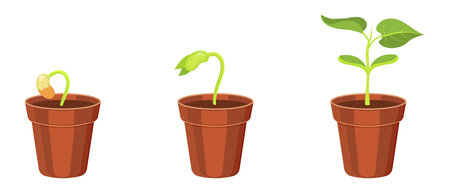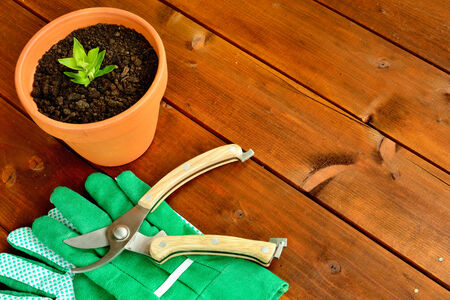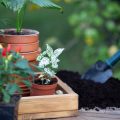Introduction to Smart Gardening
Gardening has come a long way from traditional hand tools and watering cans. Today, technology is transforming how we grow our plants, maintain our lawns, and manage outdoor spaces. Welcome to the world of smart gardening — where tech-savvy gardeners use innovative gadgets to make gardening easier, more efficient, and even more fun.
Smart gardening combines automation, sensors, data analysis, and smartphone connectivity to help you take better care of your garden. Whether youre growing herbs on a balcony or managing a full backyard landscape, there’s a smart tool designed just for you.
Why Smart Gardening Gadgets Are Gaining Popularity
Modern life can be busy, and not everyone has time to check soil moisture levels or remember when to water their plants. That’s where smart gadgets step in. These tools can automate routine tasks and provide real-time updates so you can garden smarter — not harder. Here are some key reasons why these devices are becoming must-haves:
| Benefit | Description |
|---|---|
| Time-Saving | Automated systems handle tasks like watering and lighting schedules. |
| Water Efficiency | Sensors detect soil moisture and weather conditions to reduce water waste. |
| Data-Driven Decisions | Apps and sensors provide insights into plant health and growth patterns. |
| User-Friendly | Most gadgets sync with smartphones for easy control and monitoring. |
How Technology Is Changing the Gardening Game
From automated irrigation systems that adapt based on weather forecasts to plant monitors that track sunlight and temperature, smart gardening tools are revolutionizing how we interact with our green spaces. These innovations not only simplify maintenance but also empower gardeners with knowledge they didn’t have before.
Examples of Smart Gardening Innovations
- Soil Sensors: Measure moisture, pH levels, and nutrients in real-time.
- Smart Sprinklers: Adjust watering schedules based on local weather data.
- Plant Monitors: Send alerts when plants need attention via an app.
- Grow Lights: Automatically adjust brightness depending on the time of day or plant needs.
If youre passionate about gardening and love staying up-to-date with the latest tech trends, then smart gardening is definitely worth exploring. In the next sections of this guide, well dive deeper into specific gadgets and how they can transform your gardening experience.
2. Top Smart Devices for Efficient Watering
Keeping your garden hydrated without wasting water is easier than ever with today’s smart gardening gadgets. Whether youre trying to lower your water bill or just want to make sure your plants are getting the care they need, high-tech irrigation tools can help. Heres a look at some of the most popular and useful smart devices that bring efficiency and convenience to watering.
Wi-Fi-Enabled Sprinkler Controllers
Forget about manually setting timers or running outside in the rain to turn off sprinklers. Wi-Fi sprinkler controllers let you manage your watering schedule right from your smartphone. Many models connect to local weather data and automatically adjust watering based on rainfall, temperature, and humidity.
Popular Features:
- Smartphone control via apps
- Weather-based scheduling
- Zone customization for different plant needs
| Brand | Main Features | Estimated Price |
|---|---|---|
| Rachio 3 | 8-zone support, weather intelligence, Alexa compatible | $180–$230 |
| Orbit B-hyve | WeatherSense tech, remote control, budget-friendly | $100–$150 |
Soil Moisture Sensors
If youre tired of guessing when to water, soil moisture sensors are a game changer. These devices measure how much moisture is in your soil and send updates straight to your phone. Some even integrate with smart sprinklers to stop watering when the soil is already moist enough.
Benefits:
- Saves water by preventing overwatering
- Keeps plants healthier with consistent hydration
- User-friendly setup and maintenance
| Product | Description | Best For |
|---|---|---|
| Xiaomi Mi Flora Monitor | Bluethooth sensor with moisture, light, temp readings | Potted plants and indoor gardens |
| Twig Soil Sensor by Edyn (Discontinued but still usable) | Sends real-time data to app; works well with drip systems | Larger outdoor gardens |
Programmable Smart Hoses & Timers
If you prefer hose-based watering instead of in-ground systems, programmable hose timers are a great solution. These gadgets attach between your hose and spigot and allow you to set specific watering times and durations—some even offer Bluetooth or Wi-Fi control.
User-Friendly Options:
- Easily set schedules without complex programming
- Irrigate multiple areas using dual-outlet models
- Avoid watering during rain using weather-aware timers
| Name | Main Features | Status/Price Range |
|---|---|---|
| Melnor AquaTimer 4-Zone Digital Timer | Select up to four zones with flexible schedules per zone | $45–$65 (Battery-powered) |
| Eve Aqua Smart Water Controller (Apple HomeKit) | Bluethooth & Thread-enabled, app control from iPhone/iPad | $90–$110 (Apple ecosystem only) |
The right smart watering device depends on your gardens size, layout, and how much automation you want. With these tools, you can enjoy a lush garden while conserving resources—and never forget to water again!

3. Monitoring Plant Health with Smart Sensors
Keeping your plants happy and healthy just got a whole lot easier, thanks to smart gardening sensors. These high-tech tools help you understand exactly what your plants need by measuring key factors like soil moisture, temperature, light levels, and even nutrient content. The best part? All the data is sent straight to your smartphone or tablet in real-time, so you can make informed decisions without guessing.
How Smart Sensors Work
Smart garden sensors are small devices that you place in the soil near your plants. Once theyre in place, they start collecting data 24/7. Many of these sensors connect via Bluetooth or Wi-Fi to a mobile app that displays easy-to-read charts and alerts if something needs attention—like if your soil is too dry or your plant isn’t getting enough sunlight.
Main Features of Smart Garden Sensors
| Feature | What It Does | Why It Matters |
|---|---|---|
| Soil Moisture Detection | Measures how much water is in the soil | Helps prevent overwatering or underwatering |
| Temperature Monitoring | Tracks air and soil temperature | Ensures optimal growing conditions for each plant type |
| Light Level Measurement | Monitors how much sunlight your plant gets daily | Lets you know if a plant needs more or less light |
| Nutrient Analysis (some models) | Checks nutrient levels in the soil | Keeps you on track with fertilizing and soil health |
User-Friendly Mobile Apps
The real magic happens in the companion apps. Most smart sensor brands offer free apps where all your garden’s data is displayed clearly. You’ll receive recommendations tailored to each plant species, reminders for watering or fertilizing, and even alerts for extreme weather changes. Some apps also include a plant database, helping you learn more about what youre growing.
Popular Smart Sensor Brands in the U.S.
- Xiaomi Mi Flora: Affordable and easy to use; great for beginners.
- Parrot Flower Power: Offers detailed plant care tips and tracks multiple variables.
- PlantLink: Designed specifically for American gardens; connects to a central base station.
If youre serious about keeping your garden thriving, investing in a smart sensor could be a game-changer. With just a quick glance at your phone, youll know exactly what your plants need—no green thumb required!
4. Automated Garden Maintenance Tools
If youre a tech-savvy gardener who loves innovation but not the back-breaking work, automated garden maintenance tools are your new best friends. These smart gadgets take care of the heavy lifting—literally—so you can enjoy a lush, well-kept garden without spending hours on upkeep.
Robotic Lawn Mowers
Gone are the days of pushing a mower in the sweltering heat. Robotic lawn mowers are like Roombas for your yard—they quietly trim your grass on a schedule, recharge themselves, and even avoid obstacles. Most models connect to your smartphone, allowing you to set mowing times and patterns with just a few taps.
| Model | Key Features | Best For |
|---|---|---|
| Husqvarna Automower 415X | GPS tracking, weather timer, app control | Medium-sized lawns |
| Worx Landroid WR155 | Wi-Fi enabled, rain sensor, customizable zones | Large, complex yards |
| Robomow RK1000 | Slope handling up to 45%, edge cutting mode | Hilly terrains and edges |
Automatic Weeders
Pulling weeds is one of the least enjoyable gardening tasks. Fortunately, automatic weeders can help eliminate unwanted plants with minimal effort. Some use advanced sensors and AI to identify and remove weeds while leaving your crops intact.
- Tertill Garden Weeding Robot: Developed by the creators of Roomba, this solar-powered robot patrols your garden daily, using sensors to differentiate between weeds and plants.
- Ecorobotix AVO: Though more commonly used in larger-scale agriculture, this smart weeder uses cameras and AI for precision weed removal.
Smart Pruning Devices
If youve ever struggled with pruning at the right time or cutting correctly, smart pruning devices have you covered. These tools often come with built-in sensors or companion apps that guide you through the process.
- Kebtek Electric Pruning Shears: Rechargeable and lightweight with powerful cutting ability—perfect for fruit trees and shrubs.
- SJPRUN Smart Pruner: Connects to an app that recommends pruning schedules based on plant type and season.
The Bottom Line on Automation
A fully automated garden may sound futuristic, but many of these tools are already available and user-friendly. Whether youre looking to save time or reduce physical strain, these gadgets let you focus more on enjoying your garden than maintaining it.
5. Integrating Smart Gardens with Smart Home Systems
One of the biggest perks of using smart gardening gadgets is how easily they can fit into your existing smart home setup. Whether you’re already using Amazon Alexa, Google Home, or Apple HomeKit, syncing your garden tech with these systems can give you hands-free control and automation that makes plant care easier than ever.
Why Connect Your Garden to Your Smart Home?
Imagine asking Alexa to water your plants or getting a notification from Google Assistant when your soil moisture is too low. By integrating your smart garden devices with your home assistant, you can:
- Automate watering schedules based on weather forecasts
- Control grow lights or irrigation systems using voice commands
- Monitor plant health remotely via smartphone or smart displays
- Create routines that link garden tasks with other smart home actions
Compatible Devices and Platforms
Here’s a quick look at some popular garden gadgets and their compatibility with major smart home systems:
| Device | Works with Alexa | Works with Google Home | Works with Apple HomeKit |
|---|---|---|---|
| Rachio Smart Sprinkler Controller | ✔️ | ✔️ | ❌ |
| Eve Aqua Smart Water Controller | ❌ | ❌ | ✔️ |
| Click and Grow Smart Garden | ✔️ (via IFTTT) | ✔️ (via IFTTT) | ❌ |
| Tertill Weeding Robot | ✔️ (limited) | ✔️ (limited) | ❌ |
Setting Up Voice Control for Your Garden Devices
With Amazon Alexa:
- Download the manufacturer’s app and connect your device.
- Add the corresponding Alexa skill in the Alexa app.
- Synchronize your accounts and discover devices in the Alexa app.
- Create voice routines like “Alexa, water my garden.”
With Google Home:
- Add your gardening device through the Google Home app.
- Link the service under “Works with Google.”
- Name your devices clearly for easy voice commands like “Hey Google, turn on grow lights.”
With Apple HomeKit:
- Select compatible products like Eve Aqua or certain sensors.
- Add them via the Apple Home app using QR code pairing.
- Create scenes such as “Morning Garden” to automate multiple actions at once.
Create Custom Automations for Smarter Gardening
You can set up routines that go beyond basic controls. For example:
| If This Happens… | Then Do This… |
|---|---|
| The weather forecast predicts rain tomorrow | Your sprinkler system skips its next cycle automatically |
| The sun sets in your area | Your grow lights turn on for indoor plants or seedlings |
| You say “Goodnight” to Alexa or Google Assistant | Your garden lights turn off and irrigation system pauses overnight |
Pro Tip:
If youre using platforms like IFTTT (If This Then That), you can create even more custom rules that bridge different services together—perfect for advanced users who want full control over their gardening ecosystem.
The more you connect, the smarter your garden gets. By integrating smart gardening tools into your home assistant setup, youre not just making life easier—you’re building a truly intelligent green space right outside (or inside) your door.
6. Choosing the Right Gadgets for Your Gardening Style
Smart gardening gadgets can make your life easier, but not every device is a perfect fit for every garden. Picking the right tools depends on several key factors like your gardens size, the types of plants youre growing, your local climate, and your personal gardening habits. Here’s how to match smart technology with your unique gardening needs.
💡 Consider Your Garden Size
The size of your garden plays a big role in determining which gadgets will be most effective. For small spaces, compact and multi-functional devices are ideal. Larger gardens may benefit from more advanced systems that cover wide areas.
| Garden Size | Recommended Gadgets |
|---|---|
| Small (e.g., balcony or patio) | Smart indoor planters, compact moisture sensors, Bluetooth irrigation timers |
| Medium (e.g., backyard garden) | Wi-Fi-connected weather stations, multi-zone watering systems, plant health monitors |
| Large (e.g., homestead or urban farm) | Automated irrigation controllers, robotic lawn mowers, integrated garden management apps |
🌱 Match Gadgets to Plant Types
Your choice of smart tools should also reflect the kinds of plants you grow. Whether you’re tending vegetables, flowers, or succulents, there’s a gadget that suits your setup.
| Plant Type | Helpful Smart Tools |
|---|---|
| Vegetables & Herbs | Soil nutrient sensors, app-based planting calendars, smart greenhouses |
| Flowers & Ornamentals | Color-enhancing LED grow lights, weather alerts for frost protection |
| Cacti & Succulents | Low-water alert systems, compact smart pots with drainage monitoring |
🌦️ Factor in Regional Climate
Your local weather conditions influence which gadgets will be most beneficial. For example, gardeners in hot climates may prioritize moisture retention tools, while those in colder regions might need frost warning systems.
- Hot & Dry Climates: Soil moisture sensors and automated drip irrigation help conserve water.
- Cold & Frost-Prone Areas: Smart thermometers and freeze alert systems can protect sensitive plants.
- Tropical or Rainy Zones: Rain detection sensors help avoid overwatering by adjusting schedules automatically.
👩🌾 Reflect on Your Gardening Habits
Your personal routine matters too. Are you a daily gardener or more of a weekend warrior? Tech can support your style:
- If you check on your plants daily: Use real-time monitoring apps and voice assistant integrations for hands-on control.
- If youre often away or travel frequently: Choose fully automated solutions like self-watering planters and cloud-connected garden hubs.
Tip:
Select gadgets that integrate well with each other and with platforms you already use—like Alexa, Google Home, or Apple HomeKit—for a seamless gardening experience.


